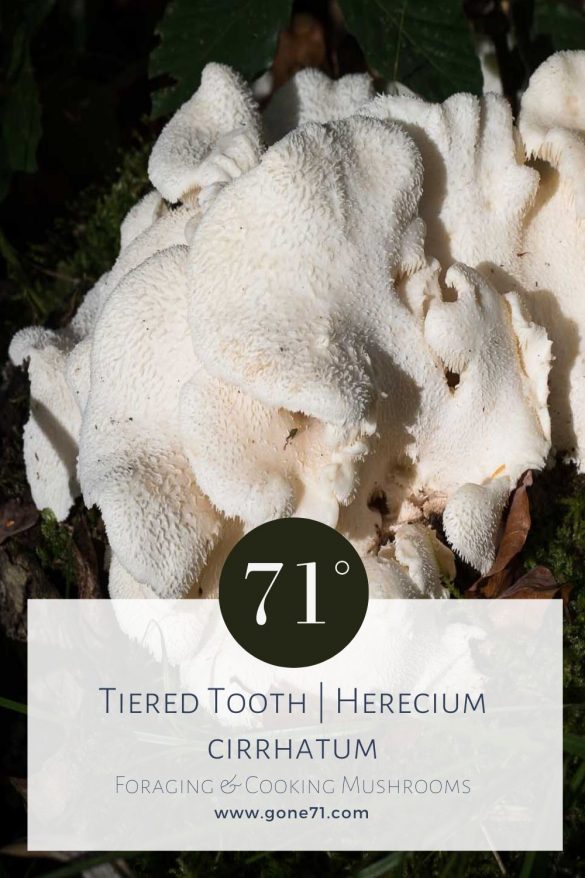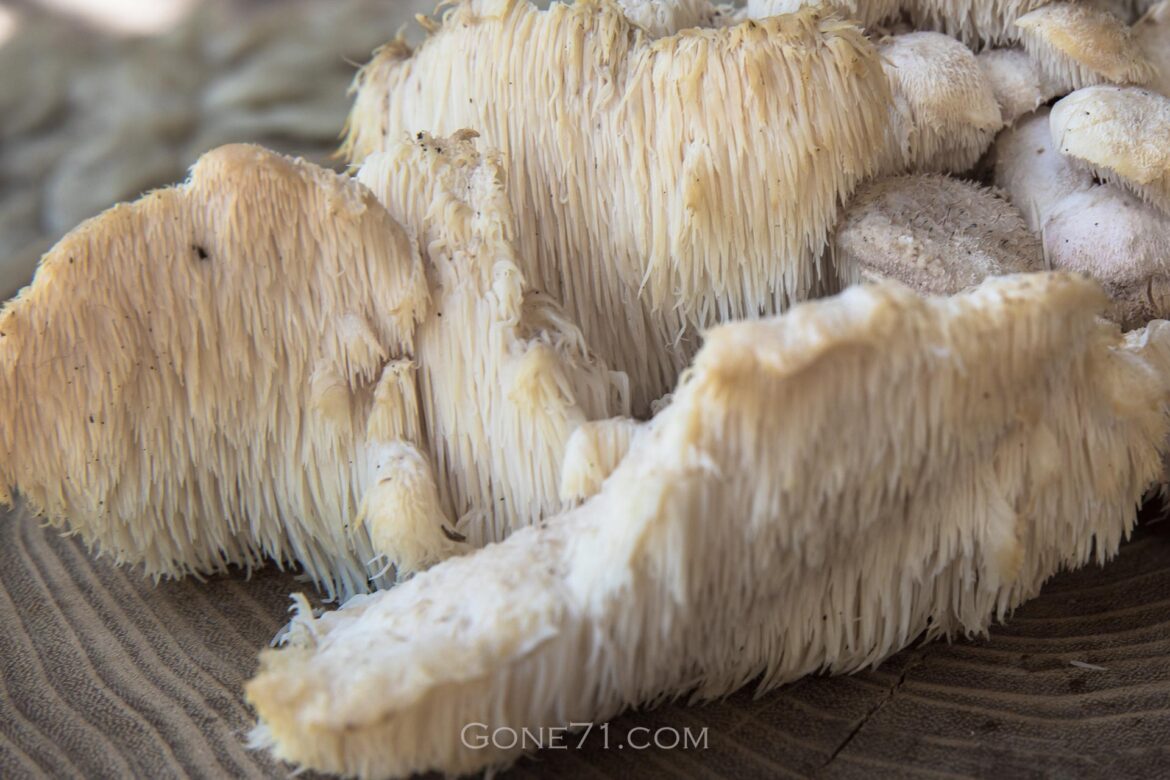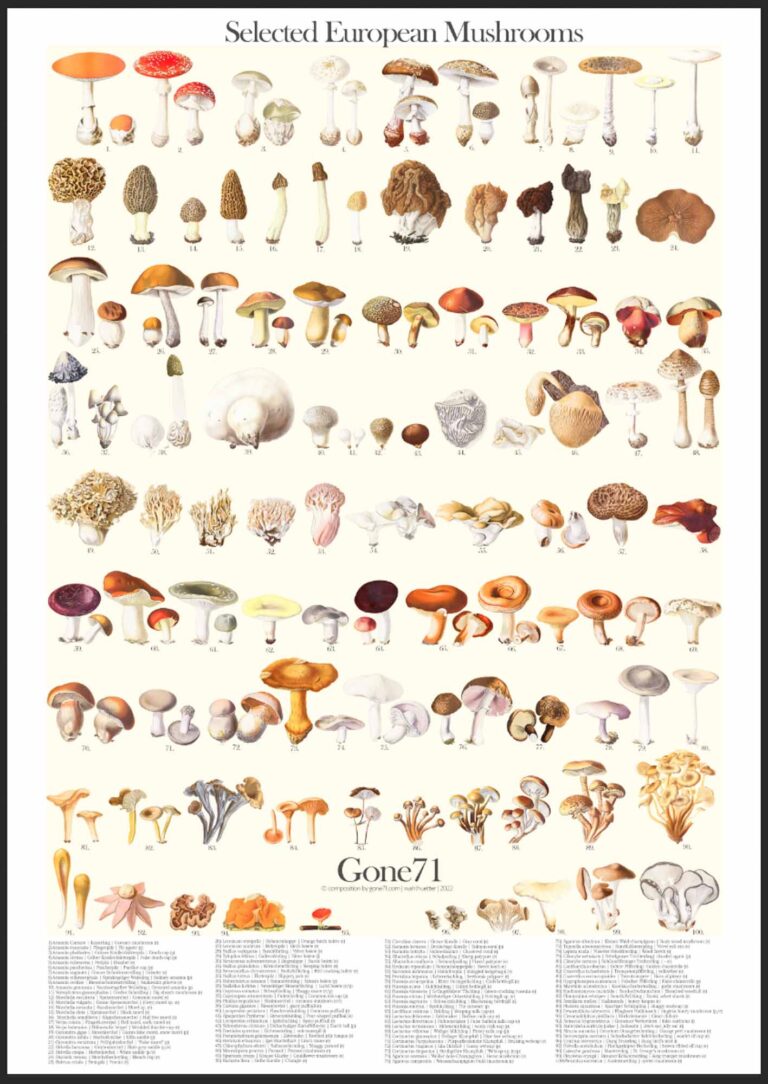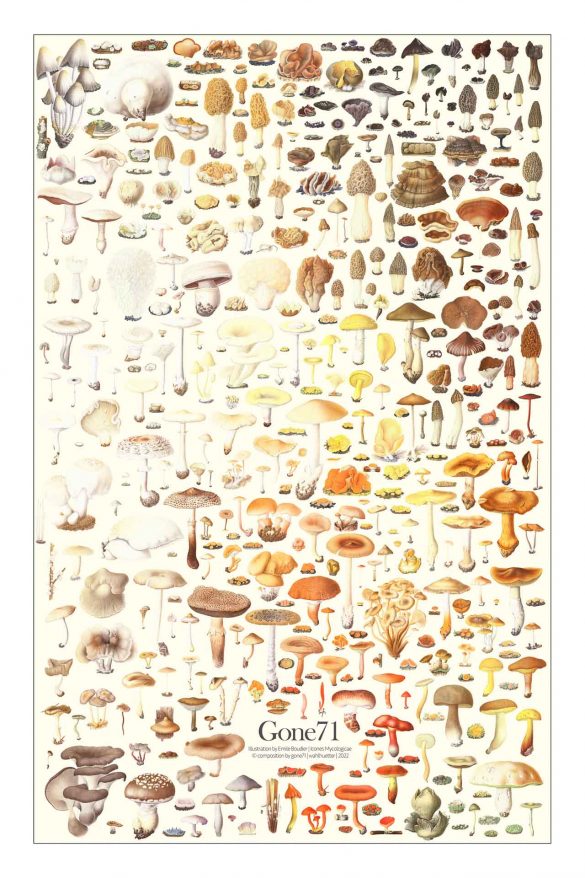nor.: Børstepiggsopp| swe.: Gyttrad taggsvamp | fin.: Tupasorakas| dt.: Dorniger Stachelbart, Dorniger Stachelseitling | sci. syn.: Creolophus cirrhatus
Hericium cirrhatum, also known as Tiered Tooth, is a highly sought after edible mushroom that is found throughout the world. This species has a delicate flavor, tender texture, and numerous health benefits, making it a valuable ingredient in gourmet cuisine. In some areas, Tiered Tooth is considered rare and protected, so it is important to follow sustainable harvesting practices to preserve its population.
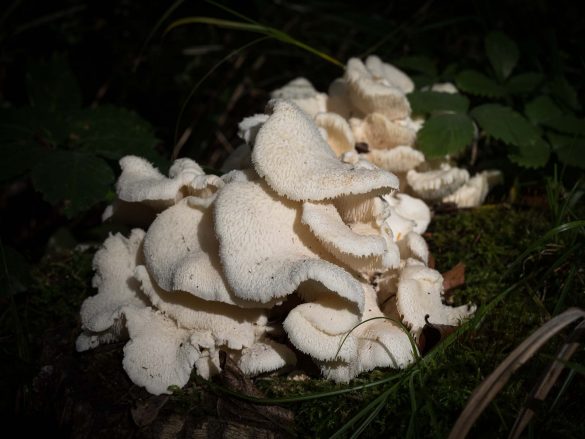
Appearance & habitat of the sheep polypore
cap diameter: 5-25 cm
months: July-November
colours: white, yellowish in later stages
habitat: deciduous trees, beech, birch
smell: pleasant
taste: mild
consumption: cooked
The fruiting body of this species can grow up to 30 cm in diameter and its spines can reach up to 5 cm in length. These spines give the Tiered Tooth a unique, almost lacy appearance that sets it apart from allmost all other edible fungi.
It is white in color, eventually becoming dirty-yellow, orange, pink, or red. The fruiting body is composed of individual caps that are often irregularly lobed, bent, or twisted. The flesh is white, yellowish, soft, and fibrous, becoming brittle and yellowing when injured. The spores of the mushroom are white and downwardly directed from a common stem.
The spore powder of Tiered Tooth is white. The species is typically found growing on deciduous trees and dead wood, particularly beech and birch, and can also cause white rot. It is found from late summer to late autumn and is considered very rare. In some countries it is portected.
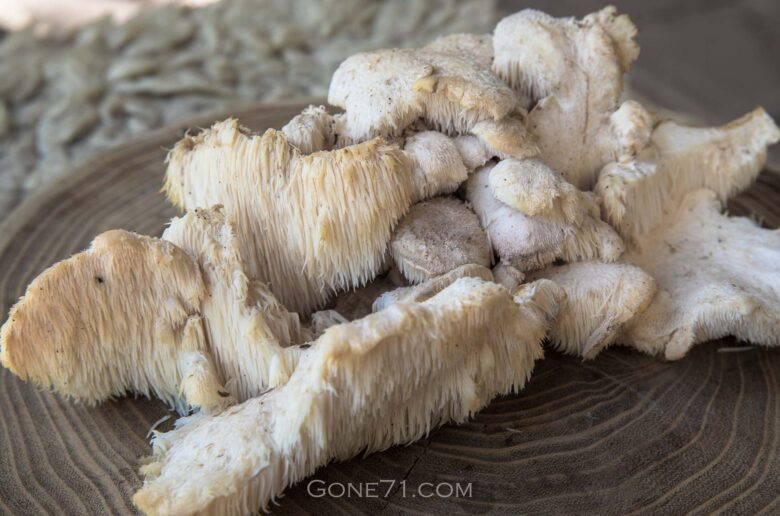
In terms of its scent, Tiered Tooth has a pleasant aroma similar to that of the sulfur mushroom. The flavor of the mushroom is mild. Overall, Hericium cirrhatum is considered to belong more to the oysterling family than the spiny oysterling family. When foraging for this species, it is important to be mindful of its rarity and follow sustainable harvesting practices to ensure its continued existence.
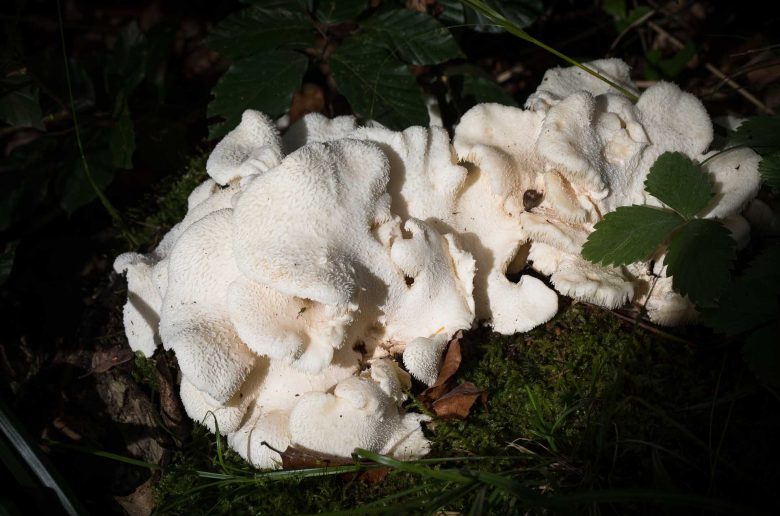
Health aspects of Tiered tooth
Traditional Chinese medicine recognizes Hericium cirrhatum as a valuable ingredient with numerous health benefits. Recent scientific studies have confirmed that this fungus is rich in polysaccharides, which have been shown to have immunostimulatory properties, as well as antioxidants and essential amino acids. Additionally, Hericium cirrhatum has been shown to have neuroprotective effects, making it a promising natural remedy for conditions such as Alzheimer’s disease and depression.
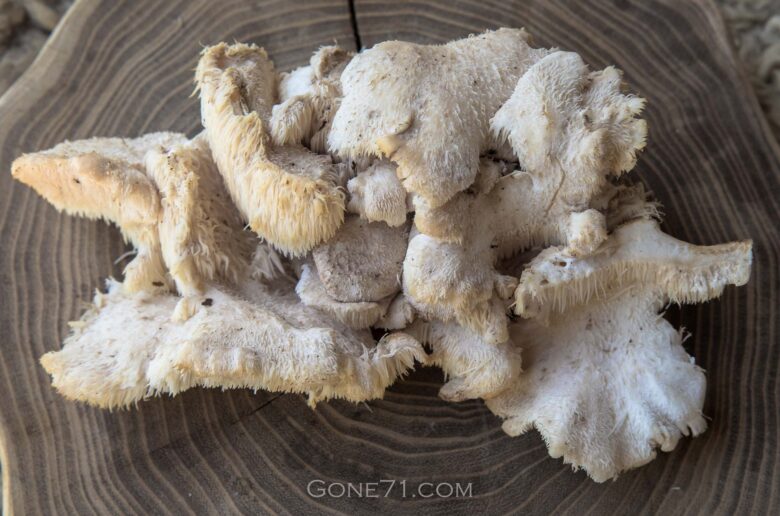
Cultivation of Tiered tooth
Cultivating Hericium cirrhatum is a challenging task, requiring a specific combination of temperature, humidity, and light conditions. This fungus is typically grown on hardwood logs or sawdust blocks and requires a warm, dark, and humid environment to fruit. Its slow growth and prolonged fruiting period make it a relatively expensive ingredient in the market, but its unique flavor and texture make it well worth the investment for enthusiasts.
Foraging Tiered tooth in the wild
The cultivation of this species can be challenging, but the results are well worth the effort. With its delicate flavor, tender texture, and numerous health benefits, Tiered Tooth is a valuable ingredient in gourmet cuisine and a responsible and sustainable addition to any dish. If you are lucky enough to find this mushroom in the wild, make sure to follow sustainable harvesting practices to preserve its population for future generations to enjoy.This can include using only a small portion of the fruiting bodies and leaving the remainder to continue producing spores and to support the health of the mycelium network.
Confusing Tiered tooth with other species
While Tiered Tooth (Hericium cirrhatum) is prized for its culinary value and is considered a delicacy in many parts of the world, it can sometimes be confused with other species of Hericium mushrooms.
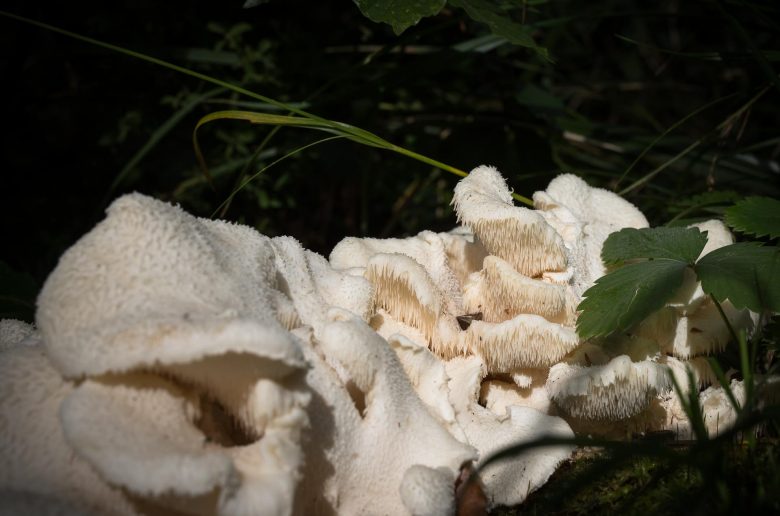
- One such species is Hericium erinaceus, also known as the Lion’s Mane mushroom. This species is similar in appearance to the Tiered Tooth, but its fruit bodies have a more spherical shape and are covered in dense, shaggy spines. The Lion’s Mane is also commonly found growing on hardwoods, but it has a more widespread distribution than the Tiered Tooth.
- Another species that is commonly confused with the Tiered Tooth is Hericium coralloides, also known as the Coral Tooth. This species has a distinctive branching form and its fruit bodies resemble miniature white coral formations. It is also found growing on hardwoods, but it is not as commonly encountered as the Tiered Tooth.
- Hericium flagellum is another species that can sometimes be mistaken for the Tiered Tooth. This species is less commonly encountered and is known for its long, stringy spines that hang down from the fruit bodies. It is found growing on hardwoods, and its fruit bodies are similar in shape to those of the Tiered Tooth, but they are typically smaller in size.
- Finally, Climacodon septentrionalis, commonly known as northern tooth fungus, is a species that can sometimes be confused with the Tiered Tooth. This species is less commonly encountered and is found growing on conifers. Its fruit bodies are typically larger than those of the Tiered Tooth and are characterized by their multiple tiers of downward-facing spines. This mushroom also has a very hard fruiting body.
Only harvest mushrooms that you can identify with 100% certainty! The consequences can be life threatening if you are wrong. If you have the slightest doubt: do not eat the mushroom! This is not a mushroom guide! For correct identification consult a mushroom expert.
Tiered tooth in the kitchen
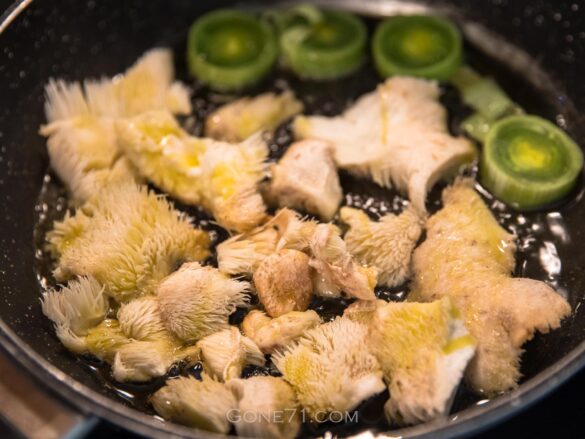
Tiered Tooth, is a highly valued edible mushroom that has gained popularity in recent years due to its unique taste and culinary versatility. This species has a delicate flavor and tender texture, making it a valuable ingredient in gourmet cuisine.
In the kitchen, Tiered Tooth can be used in a variety of dishes, including soups, stews, sauces, and stir-fries. It also works well as a vegetarian substitute for seafood, adding a delicate flavor and tender texture to dishes. The species is especially well-suited to light sauces, as its delicate flavor complements rather than overpowers other ingredients.
One of the keys to the success of Tiered Tooth in cooking is its versatility. The species can be sautéed, stir-fried, grilled, or cooked. Its tender texture and delicate flavor make it an excellent addition to salads, sauces, and soups, adding depth and richness to any dish.
In addition to its flavor, Tiered Tooth is also prized for its numerous health benefits. The species is low in calories, high in fiber, and a good source of protein and antioxidants. The species is also believed to help improve digestive function and lower cholesterol levels, making it an ideal ingredient for those looking to maintain a healthy diet.
Trooping funnel recipe

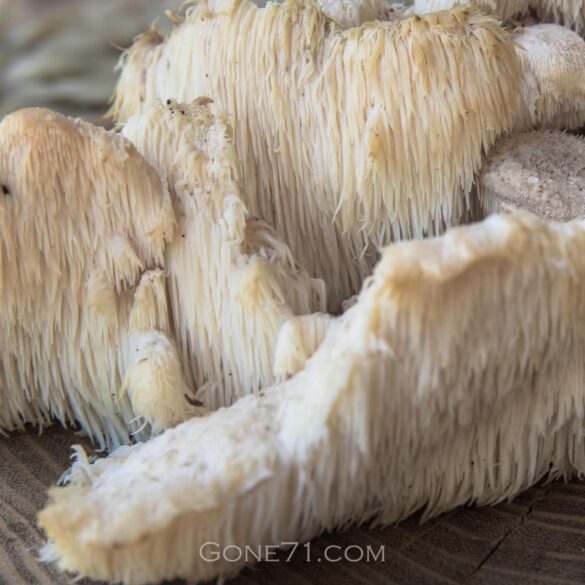
Pan-Seared Duck Breast with Cherry Reduction and Hericium cirrhatum (Tiered Tooth) Sauteed with Leek and Olive Oil
Ingredients
4 duck breasts
Salt and pepper, to taste
1/2 cup cherries, pitted and chopped
1/2 cup red wine
1/4 cup balsamic vinegar
1/4 cup brown sugar
8 oz. fresh Hericium cirrhatum (Tiered Tooth) mushrooms, cleaned and sliced
2 medium leeks, white and light green parts only, sliced
4 cloves garlic, minced
3 tablespoons olive oil
Instructions
- Season the duck breasts generously with salt and pepper on both sides.
- In a large skillet, heat the duck breasts skin-side down over medium heat. Cook until the skin is golden brown and crispy, about 8-10 minutes.
- Flip the duck breasts and cook for an additional 5-7 minutes, or until they reach an internal temperature of 145°F. Remove from heat and let rest.
- In a small saucepan, combine the chopped cherries, red wine, balsamic vinegar, and brown sugar. Cook over medium heat until the mixture has reduced and thickened, about 10-15 minutes.
- In a separate skillet, heat the olive oil over medium heat. Add the leeks and cook until softened, about 5 minutes.
- Add the garlic and continue to cook for 1-2 minutes until fragrant.
- Add the sliced Hericium cirrhatum (Tiered Tooth) mushrooms to the skillet and cook until tender, about 8-10 minutes. Stir occasionally.
- Season with salt and pepper to taste.
- Serve the pan-seared duck breast topped with the cherry reduction and accompanied by the Hericium cirrhatum (Tiered Tooth) sauteed with leek and olive oil on the side.
Notes
This dish is a perfect combination of rich and bold flavors, paired with a subtle and savory side dish. The crispy, pan-seared duck breast is elevated with the sweet and tangy cherry reduction, while the Hericium cirrhatum (Tiered Tooth) sauteed with leek and olive oil provides a balance of earthy and delicate flavors. Serve this dish at a dinner party or special occasion for a truly sophisticated meal.
If you want to keep it simple or are vegetarian/vegan you can also prepare the mushroom side dish as a main course.
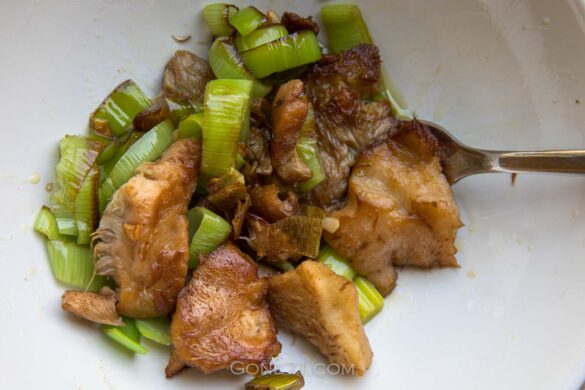
We have compiled this overview with the best of knowledge and belief, but do not claim to be complete and reserve the right to make errors.
Learn more about poisonous mushrooms and mushroom poisons here
↓↓↓
Find some inspiration in our illustrations
↓↓↓
Find some inspiration in other mushroom recipes
↓↓↓
